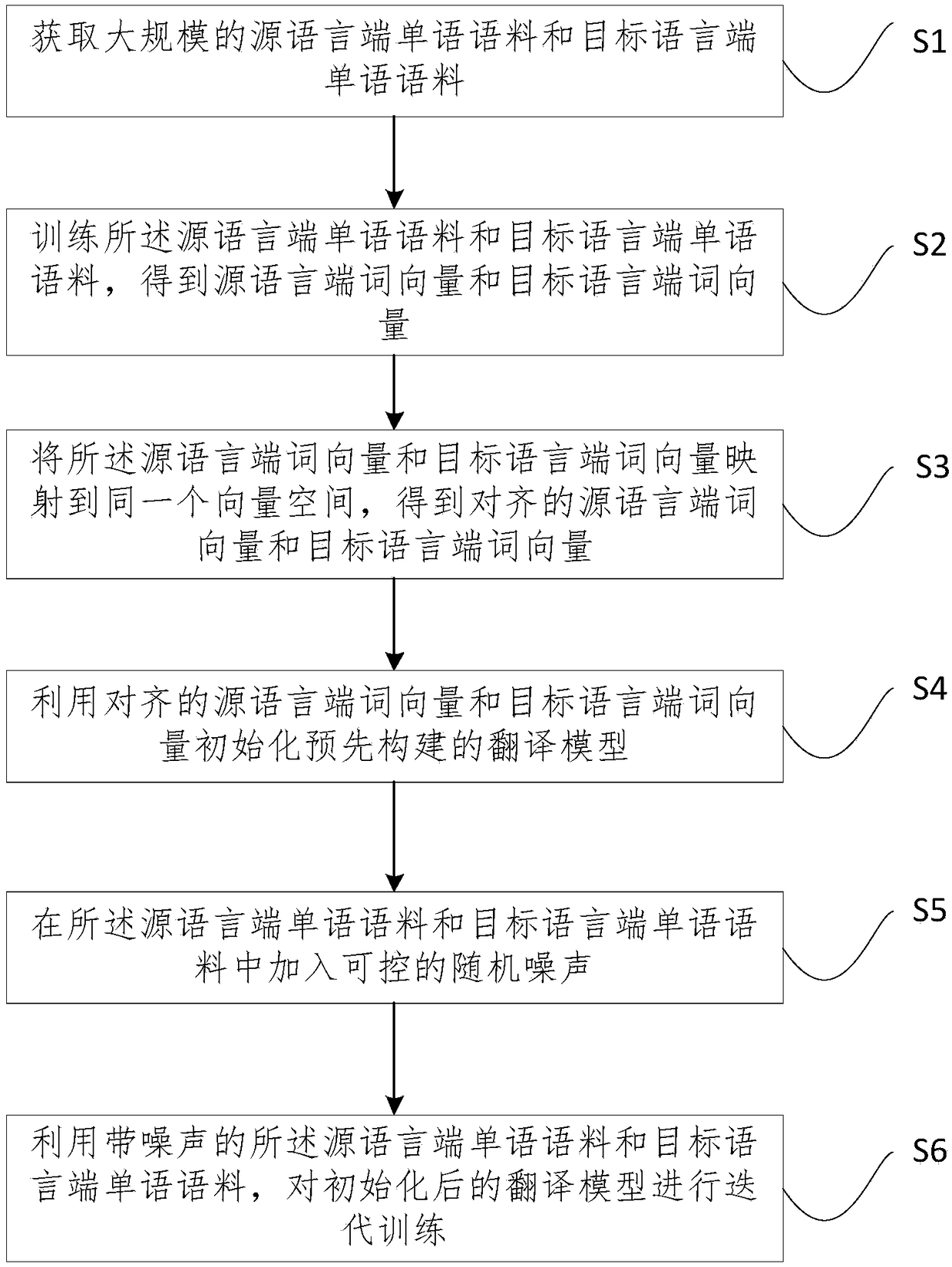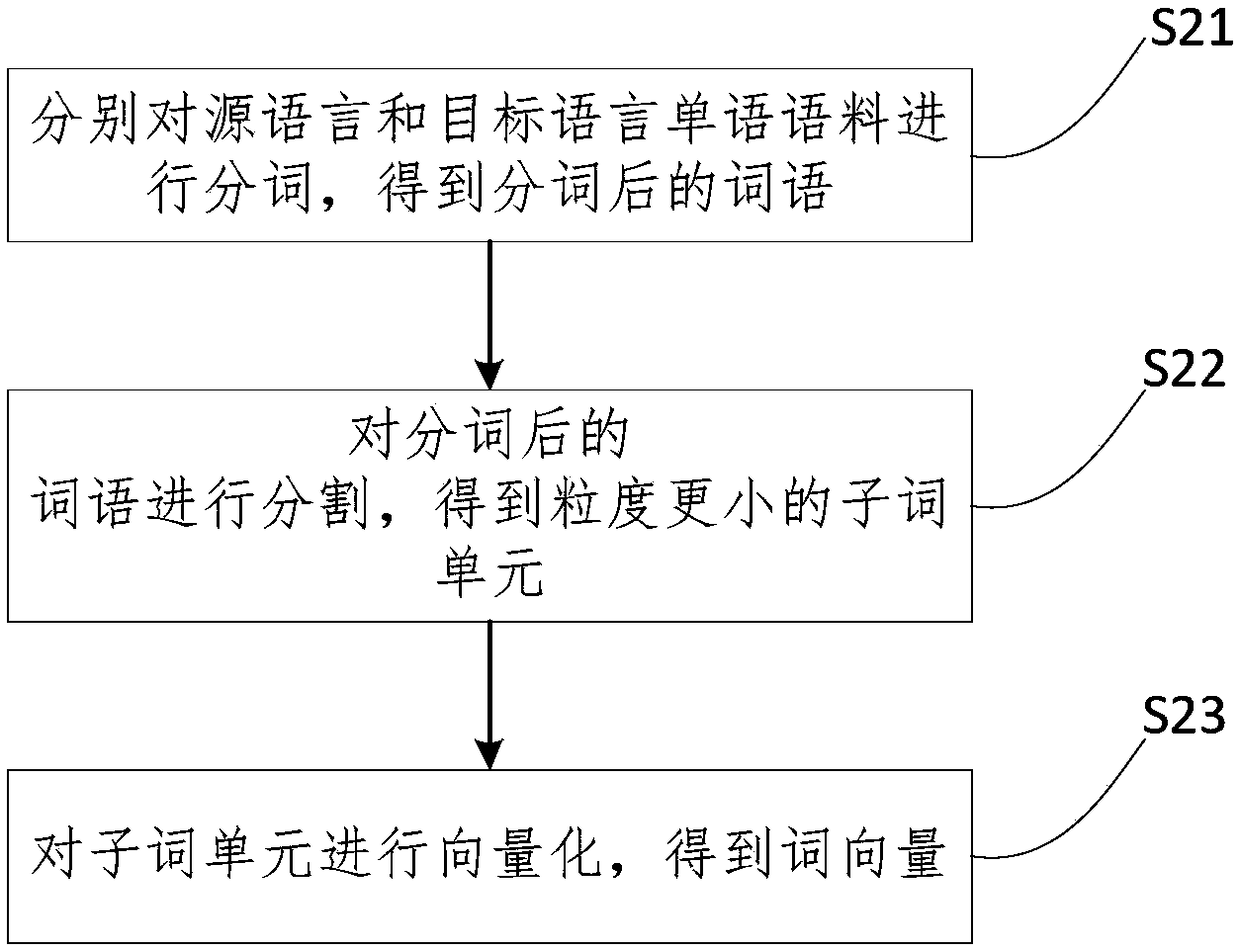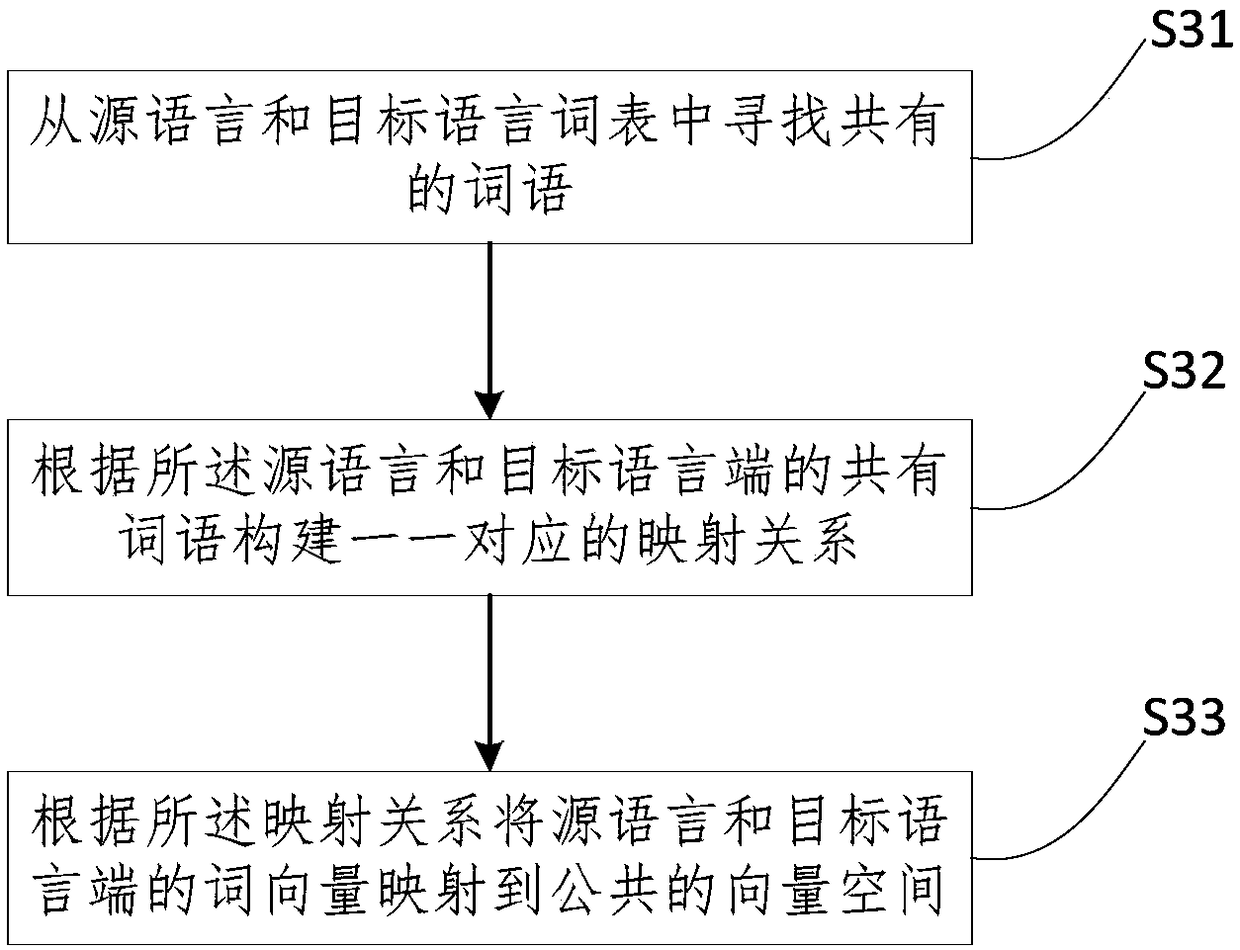A method and device for training a translation model
A technology of translation model and training method, applied in the field of natural language processing, which can solve problems such as expensive manual labeling, restrictions on large-scale deployment of manual standards, and difficulty in obtaining parallel corpus
- Summary
- Abstract
- Description
- Claims
- Application Information
AI Technical Summary
Problems solved by technology
Method used
Image
Examples
Embodiment 1
[0084] figure 1 A flow chart of a translation model training method provided by an embodiment of the present invention, the method is applied to a translation model whose network structure is a deep neural network, such as figure 1 As shown, the method includes:
[0085] S1: Obtain large-scale monolingual corpus in the source language and monolingual corpus in the target language;
[0086] The source language refers to the language to be translated in the translation task, and the target language refers to the output language after the translation task is completed. For example, in a Chinese-to-English translation task, Chinese is the source language and English is the target language.
[0087] Monolingual corpus refers to unlabeled corpus, that is, there is no one-to-one correspondence between the source language and the target language. In this embodiment, the monolingual corpus may be a text corpus obtained from the Internet and manually sorted out, or a text corpus manu...
Embodiment 2
[0100] A translation model training method provided by an embodiment of the present invention, the method is applied to a translation model whose network structure is a deep neural network, and the flow of the method is as described in Embodiment 1, and will not be repeated here;
[0101] figure 2 A flow chart of a word vector training method provided by an embodiment of the present invention, such as figure 2 As shown, in the embodiment of the present application, step S2 includes:
[0102] S21: Segment the monolingual corpus on the source language side and the target language side respectively, and obtain the word after word segmentation.
[0103] For specific word segmentation methods, reference may be made to various related technologies. Such as the traditional word segmentation method based on conditional random field and the current mainstream word segmentation method based on long short-term memory network.
[0104] It should be noted that if the current language ...
Embodiment 3
[0112] A translation model training method provided by an embodiment of the present invention, the method is applied to a translation model whose network structure is a deep neural network, the flow of the method is as described in Embodiment 1 or 2, and will not be repeated here;
[0113] image 3 A flow chart of a word vector alignment method provided by an embodiment of the present invention, such as image 3 As shown, in the embodiment of the present application, step S3 includes:
[0114] S31: Searching for common words from the monolingual corpus of words in the source language and the target language.
[0115] Specifically, the common words in the source language and the target language usually include Arabic numerals, commonly used symbols, and the like.
[0116] S32: Construct a one-to-one mapping relationship according to the shared words of the source language and the target language;
[0117] Specifically, the word vectors corresponding to the words shared in th...
PUM
 Login to View More
Login to View More Abstract
Description
Claims
Application Information
 Login to View More
Login to View More - R&D
- Intellectual Property
- Life Sciences
- Materials
- Tech Scout
- Unparalleled Data Quality
- Higher Quality Content
- 60% Fewer Hallucinations
Browse by: Latest US Patents, China's latest patents, Technical Efficacy Thesaurus, Application Domain, Technology Topic, Popular Technical Reports.
© 2025 PatSnap. All rights reserved.Legal|Privacy policy|Modern Slavery Act Transparency Statement|Sitemap|About US| Contact US: help@patsnap.com



